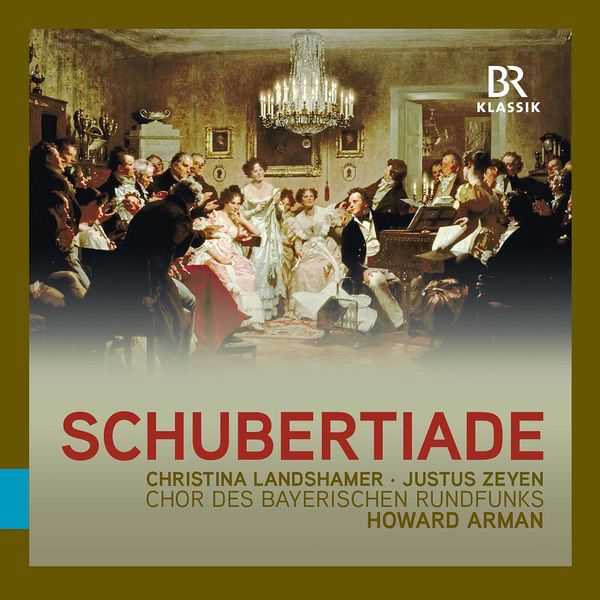

Composer: Franz Peter Schubert
Performer: Justus Zeyen, Merit Ostermann, Andrew Lepri Meyer, Christina Landshamer, Chor des Bayerischen Rundfunks
Conductor: Howard Arman
Format: FLAC (tracks)
Label: BR Klassik
Catalogue: 900528
Release: 2022
Size: 1.12 GB
Recovery: +3%
Scan: yes
01. Der Gondelfahrer, Op. 28, D. 809 (Arr. for Male Choir & Piano)
02. Ständchen, D. 920 (1840 Version)
03. Wehmut, Op. 64 No. 1, D. 825
04. Ewige Liebe, Op. 64 No. 2, D. 825a
05. Flucht, Op. 64 No. 3, D. 825b
06. Gott in der Natur, Op. 133, D. 757
07. Nachthelle, D892 (Seidl)
08. Psalm 23, D. 706 (Arr. for Female Choir & Piano)
09. Sehnsucht (Nur wer die Sehnsucht kennt), D656
10. Mirjam’s Siegesgesang, Op. 136, D. 942
In society music, or Gesellschaftsmusik, to which a large part of Franz Schubert’s lied oeuvre belongs, polyphonic vocal compositions became very fashionable in around 1800 as part of bourgeois musical culture and communal singing. To describe Schubert’s pieces for several male or female voices – some a cappella, some with piano or other instrumental accompaniment – as choral songs is not entirely accurate, however, since at the time they were usually sung by soloists. However, amateur choirs such as the Gesellschaft der Musikfreunde in Vienna already existed and held regular concerts, and Schubert’s polyphonic songs thus often came to the attention of a wider public more quickly than his solo songs performed in private circles. Society music had thus taken the step into the concert hall, and Schubert’s name first appeared on a programme of the Musikfreunde on January 25, 1821.
Some of the composer’s best-known songs for men’s or women’s choir with piano are collected in this SCHUBERTIADE, including the gently swaying barcarole ‘Der Gondelfahrer’, in which Schubert evokes the glitter of moonlight on the Venetian canals, or the ‘Ständchen’, which was written as a birthday serenade. One of his five settings of Mignon’s ‘Nur wer die Sehnsucht kennt’ from Goethe’s Wilhelm Meister was written for five-part male choir – a special feature here among his polyphonic songs is that Mignon’s tormented soul is expressed through a differentiated harmony and refined treatment of the text. A prominent position among Schubert’s religious pieces that were not intended for the church is occupied by ‘Mirjams Siegesgesang’, where the male and female choirs finally unite and embody the Israelite people. The choir answers to a solo soprano as the precentor. This large-scale work depicts the exodus of the people of Israel from Egypt, with the prophetess Mirjam at their head; her three-movement hymn of praise leads into an impressive choral fugue.



